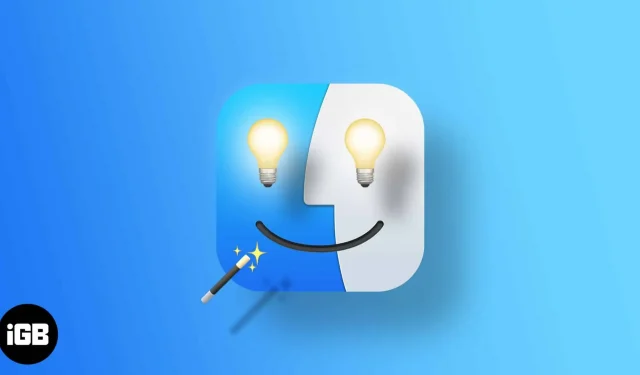Finder is an important macOS feature for finding and organizing files and folders on your Mac. It is constantly running in the background, facilitating your workflow. But do you know how to tweak Finder options to speed up everyday tasks?
Here are some Finder tips and tricks to help you use it efficiently and improve your productivity at the same time. So let’s not delay any longer and get to them.
- Essential Finder Tricks Every Mac User Should Know
- Finder Hacks Every Pro User Should Know
- Bonus: Finder Keyboard Shortcuts
Essential Finder Tricks Every Mac User Should Know
If you rely on Finder’s default settings, these Mac Finder tips can improve your Finder experience. I believe these are some of the essential Finder tips that every Mac user should know.
1. Change the Way Finder Views Files
You can select a file by default and hit the spacebar to use Quick Look in the Finder. But there is a much faster way to display files more efficiently. You can view items as icons, lists, galleries, or columns to quickly view them.
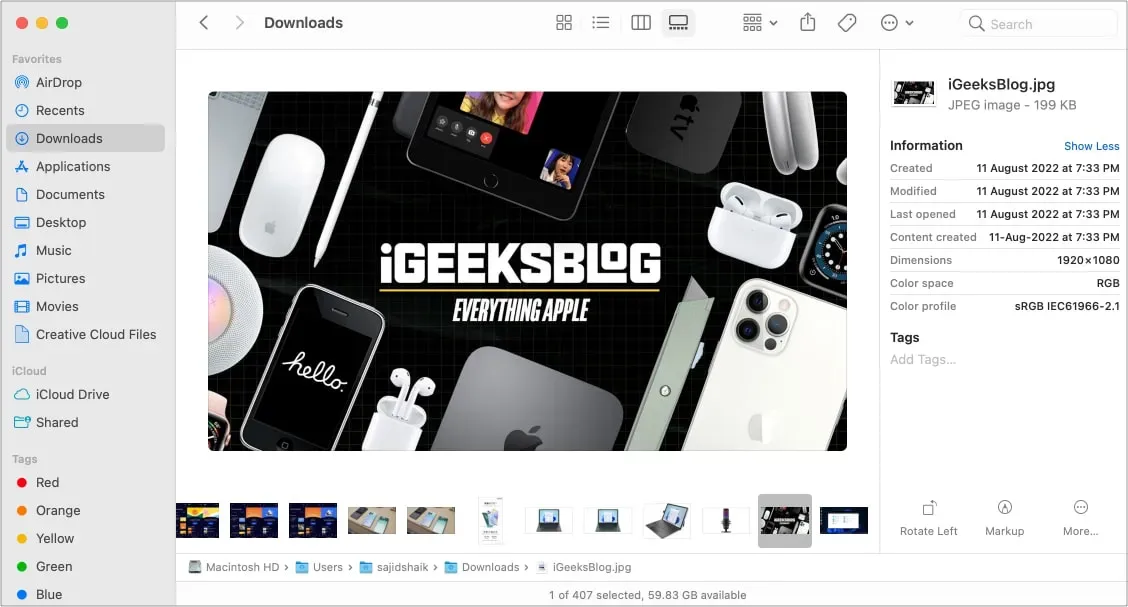
Depending on your preference, tap the gallery icon or the column at the top of the Finder window to change how folders are displayed on Mac. Both options show a quick preview of the selected file so you can quickly find your files.
The Finder sidebar on the left offers a quick way to access AirDrop and other folders like iCloud Drive, Photos, and other frequently used folders.
You can also use a selection of items to display in the sidebar. To do this, select Finder from the menu bar, Preferences → Sidebar, and select the items you want to display in the sidebar. Later, you can drag and drop these elements to your liking.
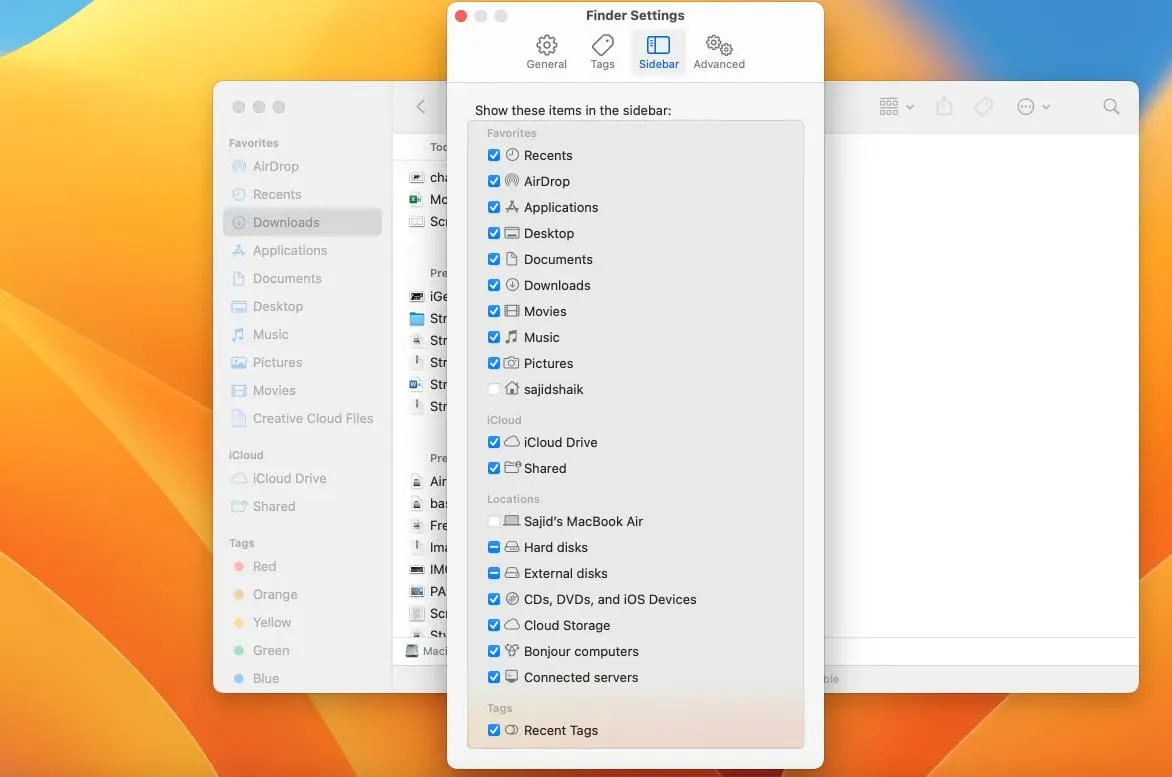
3. Change the default Finder window.
Sometimes you open Finder and navigate to a specific folder each time. However, you can set that particular Finder folder as the default when you open Finder.
Go to Finder → Preferences → General in the menu bar and select the folder you want to open under New Finder Windows:. I installed it in my Downloads folder since I open it several times a day.
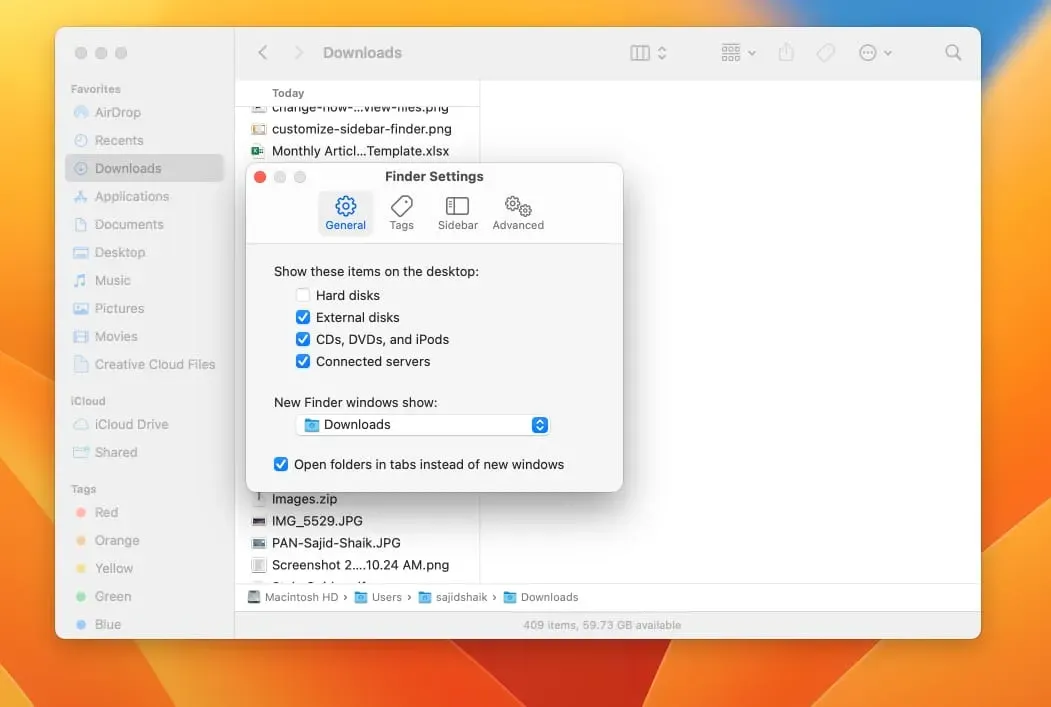
4. View file/folder path in Finder
If you want to see the full path of a file/folder in Finder, you need to hold down the Command key and select the folder name at the top to see its path. Although there is a much faster way to view the path of a file or folder: the path bar.
This is very handy when you are looking for items in the library. To enable it, open a Finder window and go to View → Show Path Bar.
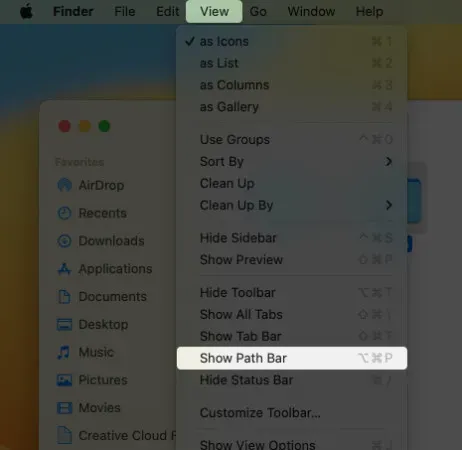
5. Show status bar in Finder
The status bar is another option that comes in handy when you want to check the number of files in the current directory. Along with that, it also shows you the total amount of memory available on your Mac.
You can enable it by opening a Finder window and choosing View → Show Status Bar from the menu.
6. Include Filename Extensions
The file info option shows all information including file type, modified date and more about the selected file or folder. However, displaying file extensions next to filenames can make things easier if you want to see the file type.
To get filename extensions, go to Finder→Preferences→Advanced and turn on the Show all filename extensions option.
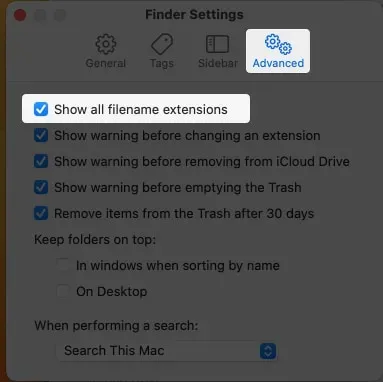
7. Merge All Finder Windows
When you open multiple instances of Finder windows for different files and folders, navigating between them can be problematic. The Mac has a way to get rid of the clutter: merge all windows.
The Finder combines all Finder instances in one window and separates them using tabs. Select a Finder window to merge all Finder windows, then choose Windows → Merge All Windows.
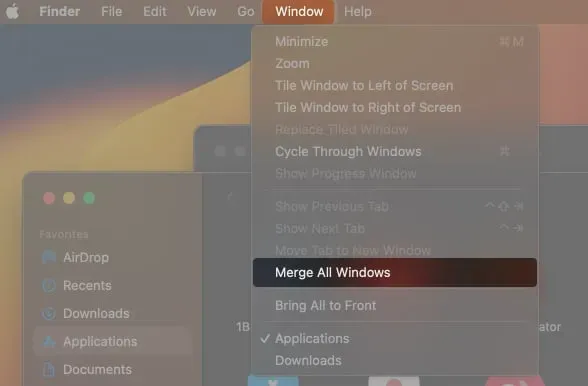
Finder Hacks Every Pro User Should Know
While the tips and tricks above can help improve your Finder experience, these tips can take your productivity to the next level.
8. Rename multiple files at once
Renaming a large number of files can be a daunting task, especially if you need to rename each one individually. Finder on Mac makes it easy to rename files with just a few clicks.
Select the files you want to rename, right-click on any of them, and select “Rename…”from the menu. A dialog box will appear asking you to specify the criteria by which you want to rename the files.
For example, I can choose the format and choose the appropriate settings to rename multiple files at the same time.
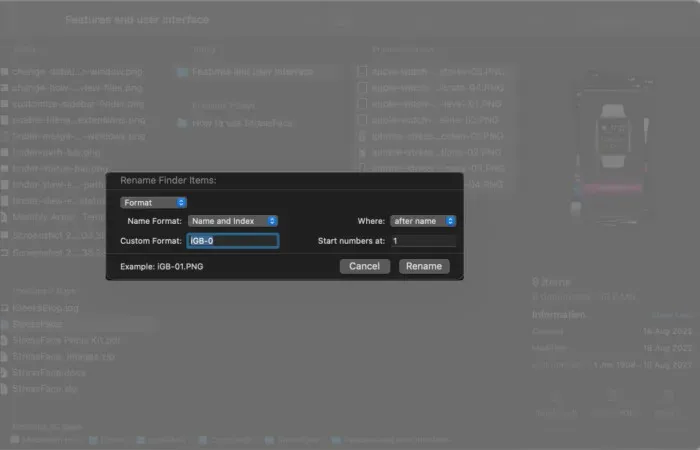
9. Additional toolbar settings
The default Finder toolbar is very useful right out of the box. You can perform actions such as adding tags, sharing the selected file, changing views, and more. However, the Finder lets you customize the toolbar and add more options to suit your preferences.
To customize the Finder toolbar, right-click on the toolbar and select “Customize Toolbar”from the options listed.
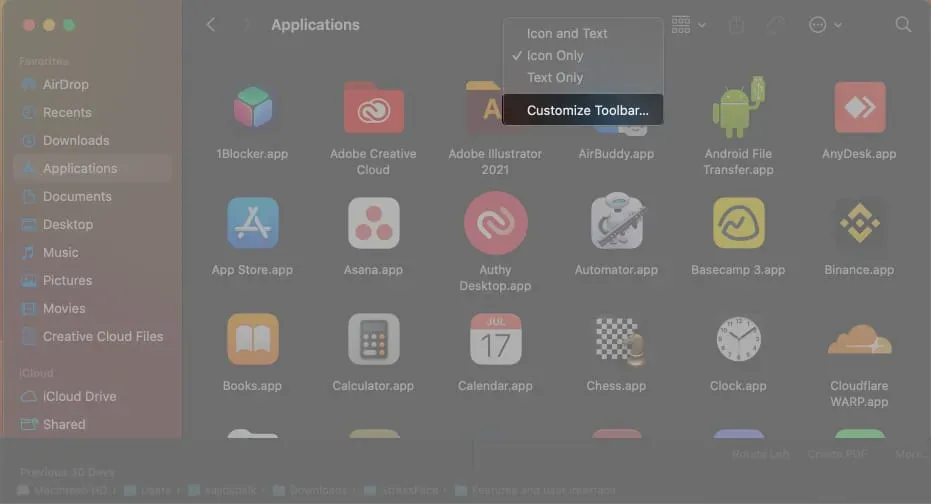
Drag the icons to the desired location on the toolbar. In my case, I added an AirDrop icon to the toolbar for quick access when sending files.
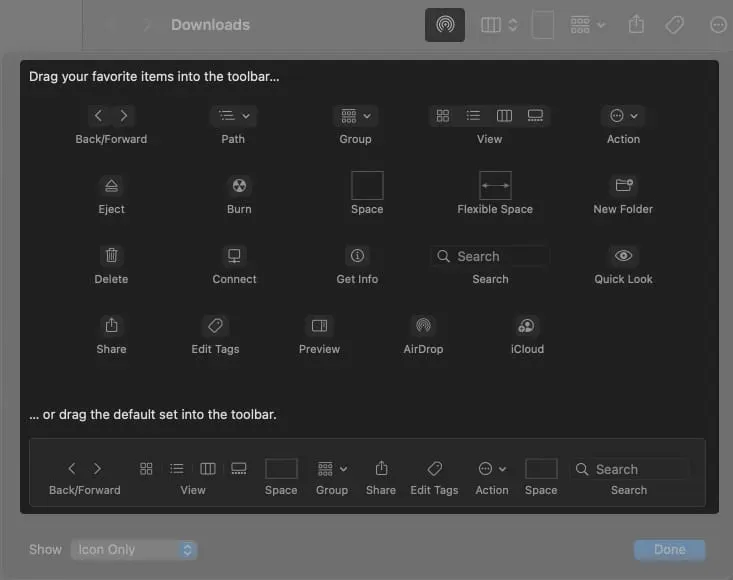
One of the best features of the Finder is that you can organize files and folders using tags. A tag is nothing but a color label that you can assign to a file or folder so that you can easily find it. You can also rename existing tags or create new ones.
To assign a tag in the Finder, right-click on a file or folder and select a color from the options you want to assign. You can also click on the “Tags…”option to add or manage default tags. All tags are available in the Finder sidebar.
To remove a tag, right-click the file or folder and click the assigned color to remove it.
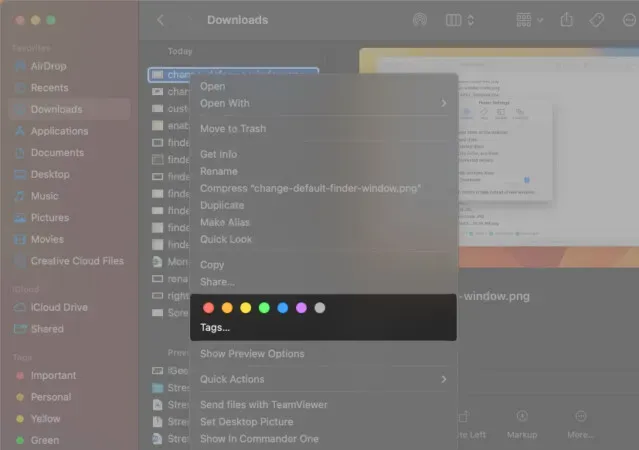
11. Set up a smart folder
If you have a bunch of files with something in common, moving them to a specific folder can be a little hectic if you have to do it repeatedly. Instead, you can set up a smart folder that will do it for you.
To create a Smart Folder, open Finder and choose File → New Smart Folder. Then specify the first criterion – for example, all files with the phrase Finder. You can also set a second criterion to further narrow the results. Click Save and provide a name and location for the smart folder.
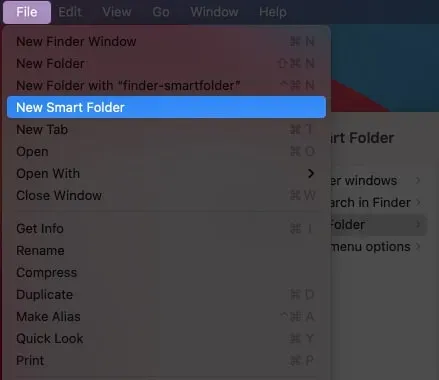
Alternatively, you can deselect the Add to Sidebar option if you don’t want it to appear in the sidebar. Rename the file and avoid using special characters if you see an error message.
12. Use your own icon for files and folders
Finder has standard previews and icons to identify files and folders. Luckily, the Finder allows you to have your own icon for any application, file, or folder. You can use an image from the web, or you can use an image from your Mac.
13. Narrow Your Finder Search
When you search for specific items in the Finder, you can narrow down your search to find them quickly by adding search criteria. Here’s how you can filter your search results.
- Open a Finder window, type in your search term, and press Enter.
- Click the “+”button on the right under the search box.
- Select the required criteria from the pop-up menus.
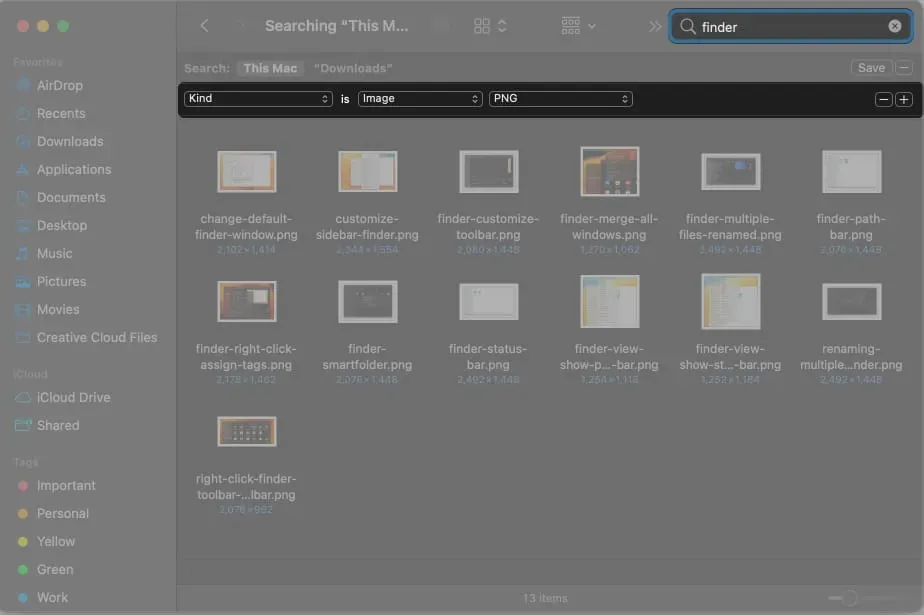
For example, you can select “Type”first, then select the document type, such as “Images”, and finally select the file format, which can be JPEG, PNG, etc.
You can further narrow your search results by clicking the “+”button and adding additional criteria.
Typically, you can right-click or tap with two fingers to view the context menu. However, you can see additional options if you hold down the Option key on your keyboard to see other options. Also, if you hold the Option and Shift keys together on the context menu, you will have other options.
Bonus: Finder Keyboard Shortcuts
- To open a new Finder window: Command (⌘) + N
- To create a new folder in the current location: Command (⌘) + Shift (⇧) + N
- To open a new Finder tab: Command (⌘) + T
- To show or hide the tab bar in Finder: Command (⌘) + Shift (⇧) + T
- To open the Applications folder: Command (⌘) + Shift (⇧) + A
- To open the Utilities folder in the Applications folder: Command (⌘) + Shift (⇧) + U
- To duplicate the selected file: Command (⌘) + D
- To search for files or folders in Finder: Command (⌘) + F
- To open the Downloads folder: Option (⌥) + Command (⌘) + L
- To open the AirDrop window: Command (⌘) + Shift (⇧) + A
- To create a new smart folder: Option (⌥) + Command (⌘) + N
- To empty the Trash: Option (⌥) + Command (⌘) + Delete
Want to have more keyboard shortcuts at your fingertips? Get our dedicated ebook for Mac keyboard shortcuts.
Get the most out of Finder on Mac
The Finder on macOS is a fantastic tool once you start using it. These Mac Finder tips can help you use the Finder productively and efficiently.
In addition, there are other Finder tips such as changing fonts and text size, bookmarking a folder, changing the Finder icon in the dock, and more. If you know of any other tips, feel free to share them with us.
